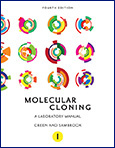Multiple protein–protein interactions converging on the Prp38 protein during activation of the human spliceosome
- Tonio Schütze1,
- Alexander K.C. Ulrich1,
- Luise Apelt2,
- Cindy L. Will3,
- Natascha Bartlick1,
- Martin Seeger1,
- Gert Weber1,
- Reinhard Lührmann3,
- Ulrich Stelzl2,4 and
- Markus C. Wahl1
- 1Freie Universität Berlin, Laboratory of Structural Biochemistry, D-14195 Berlin, Germany
- 2Max-Planck Institute for Molecular Genetics, Otto-Warburg Laboratory, D-14195 Berlin, Germany
- 3Max Planck Institute for Biophysical Chemistry, Department of Cellular Biochemistry, D-37077 Göttingen, Germany
- 4University of Graz, Institute of Pharmaceutical Sciences (IPW), Pharmaceutical Chemistry, A-8010 Graz, Austria
- Corresponding authors: stelzl{at}molgen.mpg.de, mwahl{at}zedat.fu-berlin.de
Abstract
Spliceosomal Prp38 proteins contain a conserved amino-terminal domain, but only higher eukaryotic orthologs also harbor a carboxy-terminal RS domain, a hallmark of splicing regulatory SR proteins. We show by crystal structure analysis that the amino-terminal domain of human Prp38 is organized around three pairs of antiparallel α-helices and lacks similarities to RNA-binding domains found in canonical SR proteins. Instead, yeast two-hybrid analyses suggest that the amino-terminal domain is a versatile protein–protein interaction hub that possibly binds 12 other spliceosomal proteins, most of which are recruited at the same stage as Prp38. By quantitative, alanine surface-scanning two-hybrid screens and biochemical analyses we delineated four distinct interfaces on the Prp38 amino-terminal domain. In vitro interaction assays using recombinant proteins showed that Prp38 can bind at least two proteins simultaneously via two different interfaces. Addition of excess Prp38 amino-terminal domain to in vitro splicing assays, but not of an interaction-deficient mutant, stalled splicing at a precatalytic stage. Our results show that human Prp38 is an unusual SR protein, whose amino-terminal domain is a multi-interface protein–protein interaction platform that might organize the relative positioning of other proteins during splicing.
Keywords
- pre-mRNA processing factor 38
- pre-mRNA splicing
- protein–protein interactions
- spliceosomal B complex
- spliceosome
- yeast two-hybrid analysis
Footnotes
-
Article published online ahead of print. Article and publication date are at http://www.rnajournal.org/cgi/doi/10.1261/rna.054296.115.
- Received September 2, 2015.
- Accepted November 17, 2015.
This article is distributed exclusively by the RNA Society for the first 12 months after the full-issue publication date (see http://rnajournal.cshlp.org/site/misc/terms.xhtml). After 12 months, it is available under a Creative Commons License (Attribution-NonCommercial 4.0 International), as described at http://creativecommons.org/licenses/by-nc/4.0/.











